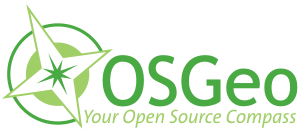Selected Presentations
Home > Presentations > Abstract details
Title
GEOSPATIAL LAYERS AND FEATURES: FROM VIRTUAL BASE CLASSES TO PLATFORMS FOR PLANNING AND MODELING
Abstract
Traditionally geospatial software has considered mainly two types of
geospatial data layers, namely rasters and vector data. Focus on
web-based information systems has introduced new layer types, which
are loaded from servers, but conceptually these are still rasters and
vector data. However, several algorithms that are routinely used for
geospatial data require data structures such as graphs and voronoi
diagrams, which have a specific topology that is not usually available
in common geospatial datasets. There is also a need to use geospatial
software tools for tasks such as spatial planning and environmental
modeling. Interactions between features, complex feature types, and
dynamics are important domain characteristics that should be supported
by geospatial software tools for these tasks. In this paper we will
present virtual base classes for geospatial layers and features. We
then present and examine how to inherit new classes for traditional
geospatial data and other types of data. The framework for the work is
the Geoinformatica geospatial software stack and its graphical user
interface core. The core comprises a set of classes for graphical
geospatial software that build on GTK+ and its Perl bindings
(gtk2-perl) and Perl itself. The geospatial workhorses of the stack
are GEOS and GDAL with its Perl bindings.
Authors
Ari Jolma - Aalto University School of Science and Technology

